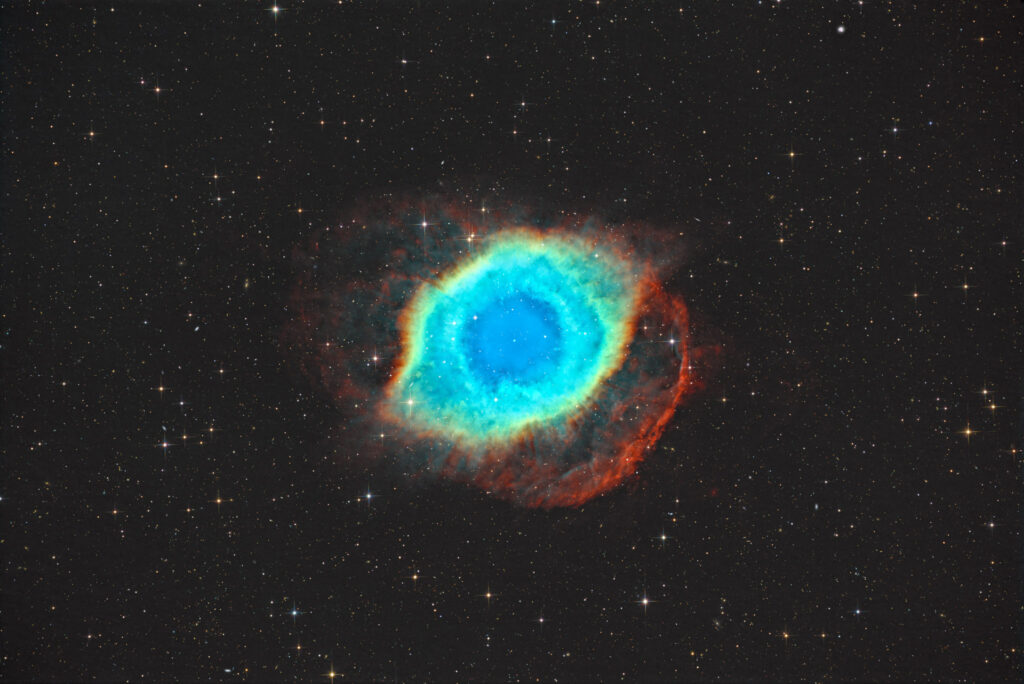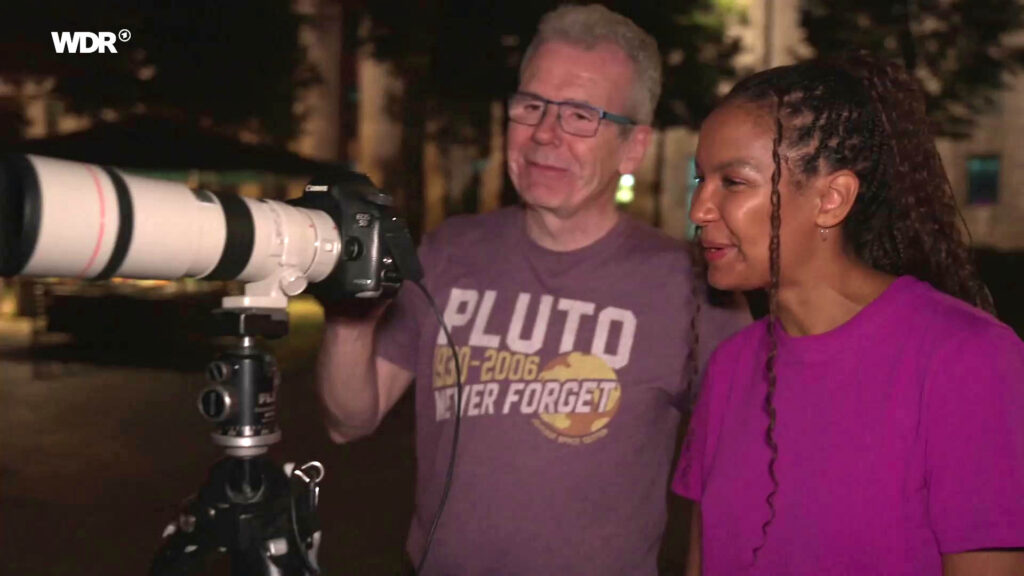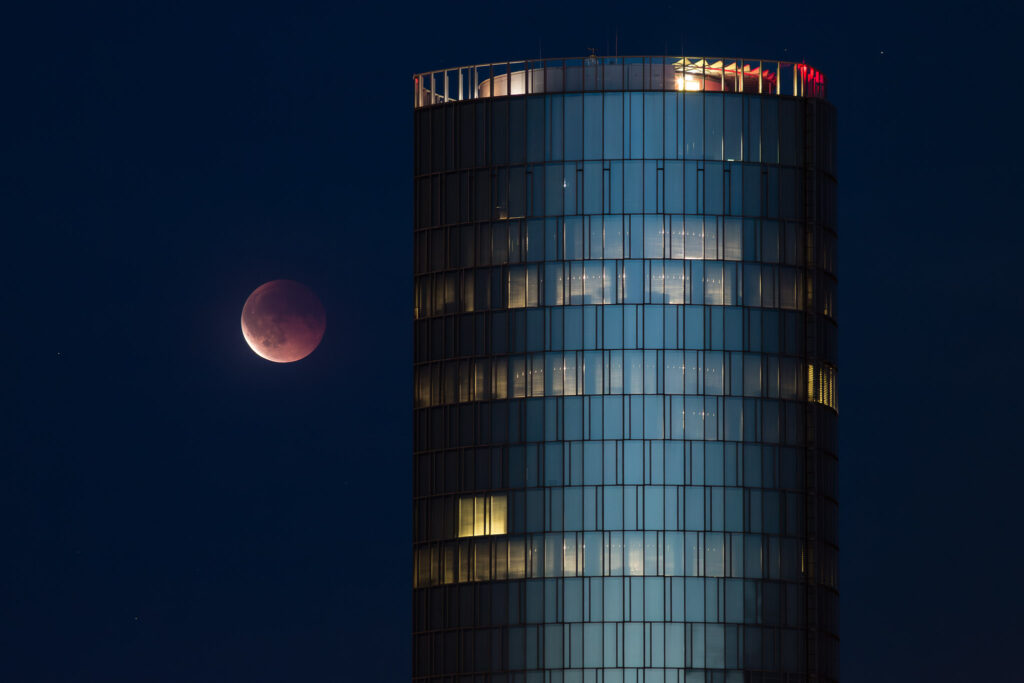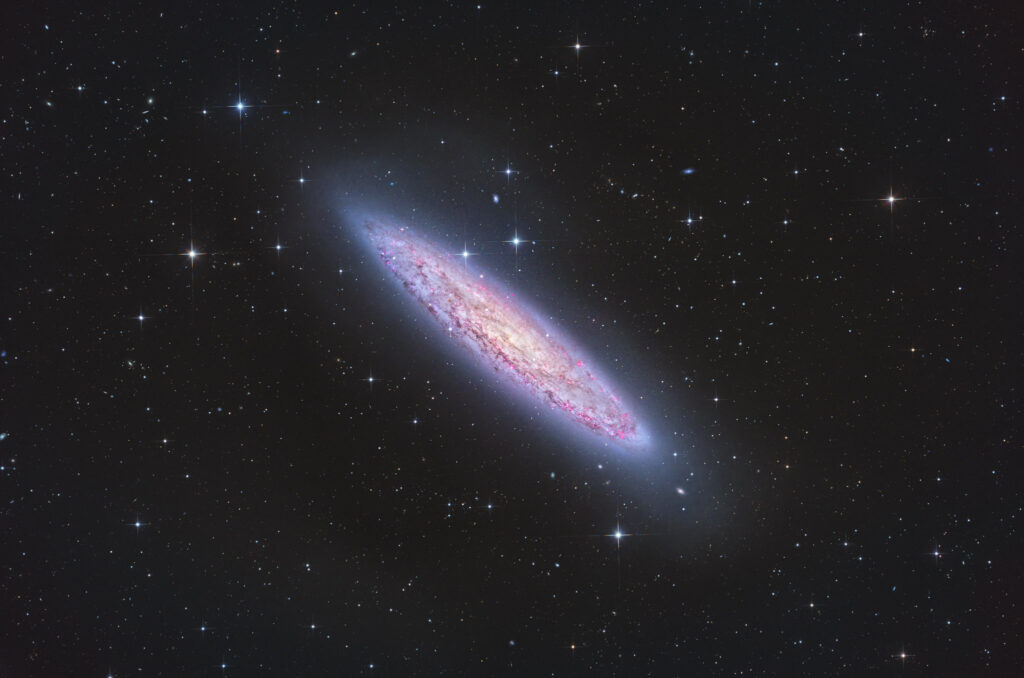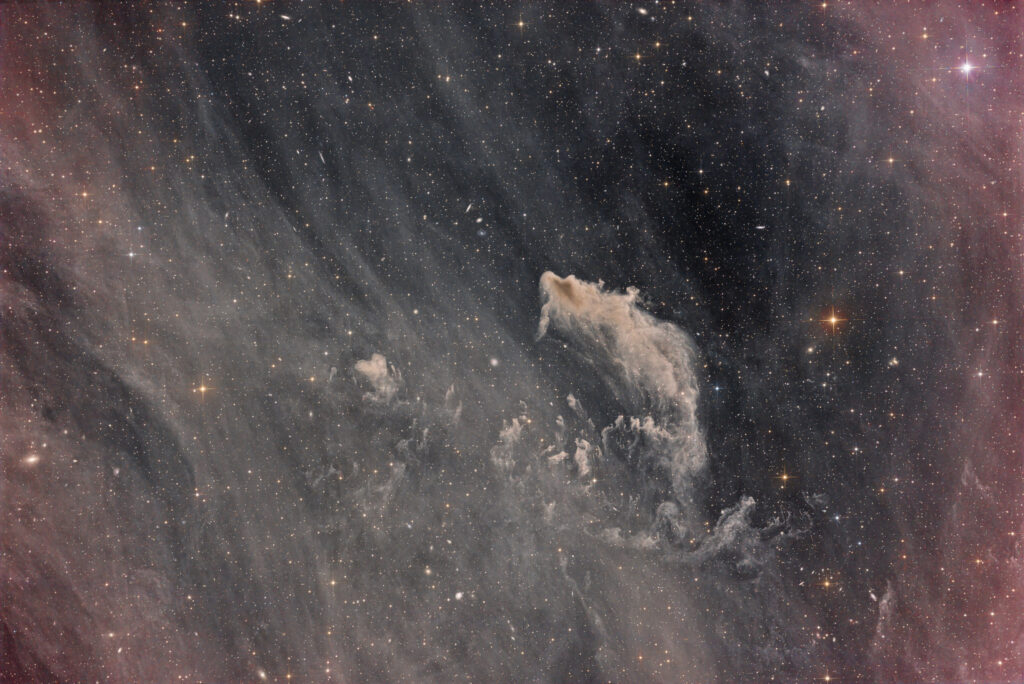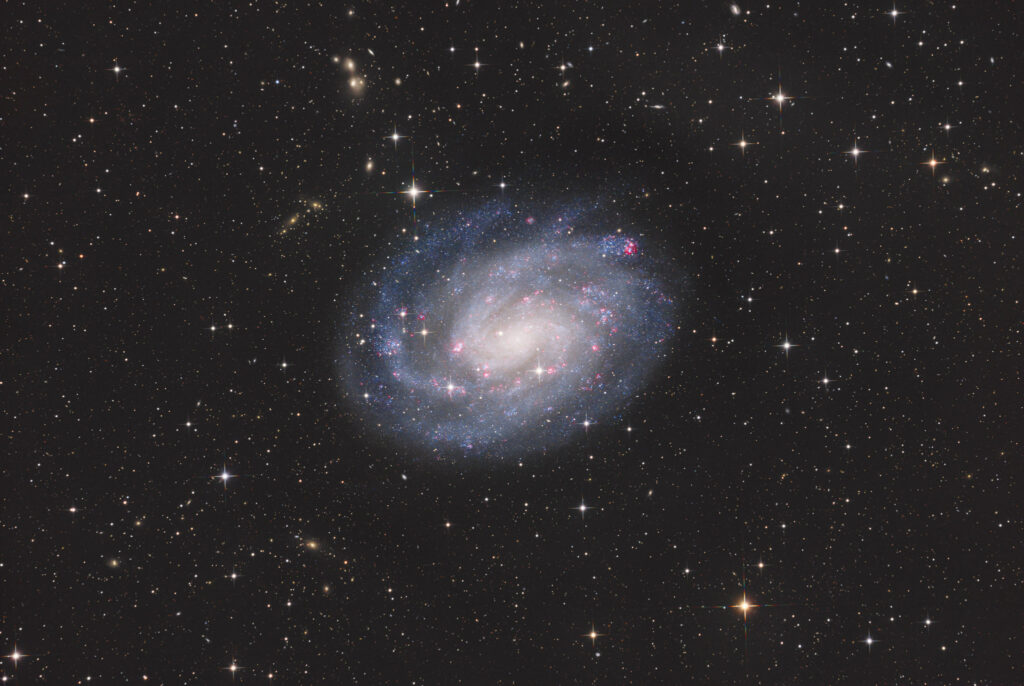
Difficult processing with these data: separating stars and galaxy with StarXTerminator doesn’t work well here, too many artefacts. So all the stretching was done with the starfull images, with just a bit of star reduction on L, to preserve the many little mostly blue stars in the arms of NGC 300.
More details at Astrobin.
Continue reading


